#white-throated magpie-jay
Text

Acapulco white-tailed deer Odocoileus virginianus acapulcensis
With white-throated magpie-jay Calocitta formosa
Observed by rodrigoarrazola, CC BY-NC
#Odocoileus virginianus acapulcensis#Acapulco white-tailed deer#Cervidae#deer#non-ungulate#bird#passerine#Calocitta formosa#white-throated magpie-jay#North America#Mexico#Oaxaca
651 notes
·
View notes
Text

204. White-throated Magpie-jay
309 notes
·
View notes
Text

It's been so long since I've drawn Fionnuala so I've been enjoying doodling her lately. I love my Merla family kenku~
She should technically have a rapier to go with that shield, but I didn't feel like drawing a basket hilt.
#kenku#birdfolk#fionnuala merla#ttrpg#White-throated magpie-jay#(also technically part eurasian magpie and part collared crow)
4 notes
·
View notes
Text
Round 1, Poll 5
White-throated Magpie-Jay vs Rufous-collared Sparrow


sources under cut
White-throated Magpie-Jay Propaganda
While most cooperative breeders have young males stay behind to raise chicks, this species has the female offspring hang back in their home territory to help with future brrods, while the males disperse. Floating males are allowed to join in on groups while foraging, however, outside of breeding season.
Because of their social pattern, and the fact that resource guarding is not done by the males, the best way they seem to have to show off is during a predator encounter. The males will often fly directly at a low-threat predator (or even a dove) and begin making some of their many (60+) vocalizations as a way to show off, as this is the time when they're being paid attention to.
Rufous-collared Sparrow Propaganda
"They're EVERYWHERE here they make my day every time I see them I love their silly little hairdos and how each flock has a slightly different call"
Local names for this species include: tico-tico (Portuguese), copetón, chingolo, chincol (Columbian), and comemaíz (Costa Rican). There are between 25-29 subspecies of this bird, likely due to their large range (Southern Mexico to the tip of Argentina) and their non-migratory habits.
Their vocal range is highly variable, with each "neighborhood" of birds having its own dialect even without being separate subspecies from each other. It's been shown that these dialects are also incredibly stable, lasting up to 30 years since the original study which categorized them.
Image Sources: Magpie-Jay (Cory Gregory); Sparrow (David Monroy Rengifo)
#hipster bird main bracket#round 1#polls#white-throated magpie-jay#rufous-collared sparrow#bracket: fave a#hello i've bought birds of the world#this is not a mistake I promise
28 notes
·
View notes
Text

wanted to draw one of my favorite birds, the white-throated magpie-jay! (Urraca Copetona in spanish)
Fact about this specie! Flocks usually are conformed by five (5) birds, being a female the lider of the flock. If she dies other female takes her place.
Colouring process under the cut ↓↓↓
#officialy free from school we are so back#white-throated magpie-jay#urraca copetona#magpie#bird#bird art#illustration#digital illustration#layraket art
12 notes
·
View notes
Text
Previously I’ve discussed the real-life inspirations for all fish Pokémon, all other aquatic Pokémon, and all starter Pokémon. Now I’m going to cover all of the legendary and mythical Pokémon. I’ll be going through each generation on its own, so strap in, this is gonna take a while.
Generation 1 starts with our first legendary trio; the legendary birds Articuno, Zapdos, and Moltres. Uniquely among legendaries, they have regional variants in the form of Galarian Articuno, G Zapdos, and G Moltres. The Galarian versions have less lore than the originals, who are considered heralds of the season of winter (Articuno), spring (Zapdos), and summer (Moltres). While some legendary and mythical Pokémon are definitely unique beings, it seems possible that the legendary birds may have populations and enough diversity for a group to become genetically isolated in Galar and diverge from their counterparts in other regions over many generations. Alternatively, the similarity of the original and Galarian birds may be a coincidence and they are actually unrelated. The birds are all based on different legendary bird creatures in mythological traditions from around the world and on real bird species.
Articuno is the one that’s hardest to pin down to a specific real-life myth. It seems to be more of an original creation made to fill in the trio as compared to Zapdos and Moltres having very distinct mythological bases. That being said, it could draw inspiration from a few myths of more benevolent birds who live on mountains, including the Persian simurgh and Chinese fenghuang. In terms of real birds, it most closely resembles the white-throated magpie-jay, which shares the light blue and white coloration and the three-pointed head crest of Articuno.
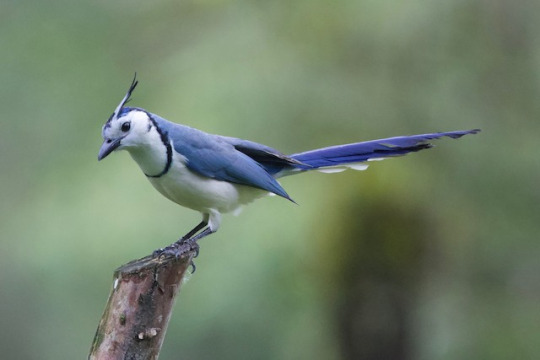
(image id: a white-throated magpie-jay. It is a songbird with a light blue back and wings and a white face and underbelly. A black line goes around its neck. It has a medium-length pointy beak. A tuft of blue feathers comes from its head)
Its long tail feathers look like those of a male resplendent quetzal, but blue instead of green.

(image id: a male resplendent quetzal. It is a bird with bright green feathers and a red underbelly. Its tail feathers are exceptionally long and white and green)
Interestingly, both of those species live in central America. Galarian Articuno is still fairly similar to the original and probably has the same real life birds as a basis. Its facial feathers also look like a masquerade mask. The mythical bird Galarian Articuno is based on is a cockatrice, an English monster that is a hybrid of rooster and retile. G Articuno can fire a beam from its eyes that paralyzes enemies and the cockatrice had the power to petrify other beings by (depending on which version of the legend you’re listening to) touching, breathing on, or looking at a target.
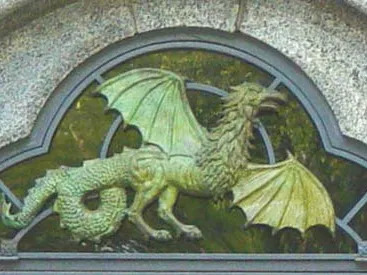
(image id: a cockatrice carking on a window. It looks like a dragon with a long, thick tail, bird-like hind limbs, a pair of bat-like wings, and the head of a rooster)
Zapdos’s mythological basis is the thunderbird, originating from a legends shared by many Native American cultural groups of North America. The thunderbird is a giant bird who brings storms, with some versions of the legend saying that the beat of its wings creates thunder and lightning flashes from its eyes. The thunderbird is usually viewed positively, as a symbol of strength.

(image id: a totem pole, the top of which features a carving of a thunderbird. It is a highly stylistic depiction of an eagle with black and white wings and a large head and large, curved beak)
By contrast, another mythical bird associated with lighting that may also have inspired Zapdos is the Zulu impundulu or lightning bird, which is considered a monster. These birds were born when lighting strikes the ground and had magical powers and a thirst for blood. This certainty fits Zapdos’s violent nature more than the Thunderbird does. As for real birds, I initially thought of some kind of crane or stork, but between its long beak, short wings, and violent nature actually points to a hummingbird of all things. Yeah, hummingbirds are pretty violent. When you need to eat 2-3 times your weight in nectar every day you’ll end up having to fight over flowers just to survive. In fact, hummingbirds are so violent that the Aztecs associated them with Huitzilopochtli, god of war and the sun.

(image id: an Allen's hummingbird. It is a very small bird with a long, skinny beak. Its head and most of its body are a dull orange color. Part of its chest is white and its throat is red. Its wings are in motion and obscured by motion blur)
Galarian Zapdos is a ratite. Ratites are a group of primitive flightless birds that include ostritches, emus, and cassowaries among others. G Zapdos’s long beak points it toward one particular ratite: the kiwi. Yeah, Zapdos likes to be a badass version of now very intimidating birds. G Zapdos fighting mainly with kicks is fitting as most ratites are capable of delivering very powerful kicks. Its speed references roadrunners, who can fly but are faster while running. As far as I can tell, G Zapdos isn’t based on any myths.

(image id: a kiwi standing in grass. It is a small bird with a round, brown body and no visible wings. Its head is small, round, and brown. It has a long, skinny beak)
Moltres is based on mythical flaming birds like the phoenix, firebird, and the vermillion bird. The phoenix appears in Greek mythology and is an immortal bird that dies in fire and is reborn from its own ashes. The phoenix may have been inspired by the older Egyptian god Bennu, a god of the sun, creation, and rebirth that appeared as a bird. The firebird features in Slavic folklore where it either glows like fire or is actually on fire. It can be a harbinger of both good and bad luck, like how Moltres heralds the coming of summer but can also start wildfires.
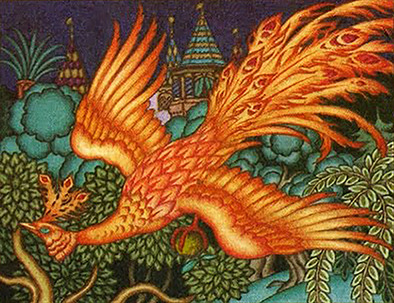
(image: a painting of the firebird by Boris Zvorykin. The bird is similar in appearance to a peacock, with a long neck and a head with three feathers rising from it as a crest. The tail is long and features many eyespots. The whole bird is red and orange, making it look like it is made of fire. It holds a fruit on one foot. The background is a castle behind some trees)
The vermillion bird is one of the four symbols of Chinese mythology, legendary animals that are associated with cardinal directions and constellations. The vermillion bird represents south and the element of fire in the Taoist five elements. It is said to look like a red pheasant that is cloaked in flame. In terms of real birds, Moltres’s long beak and neck makes it look like a heron.
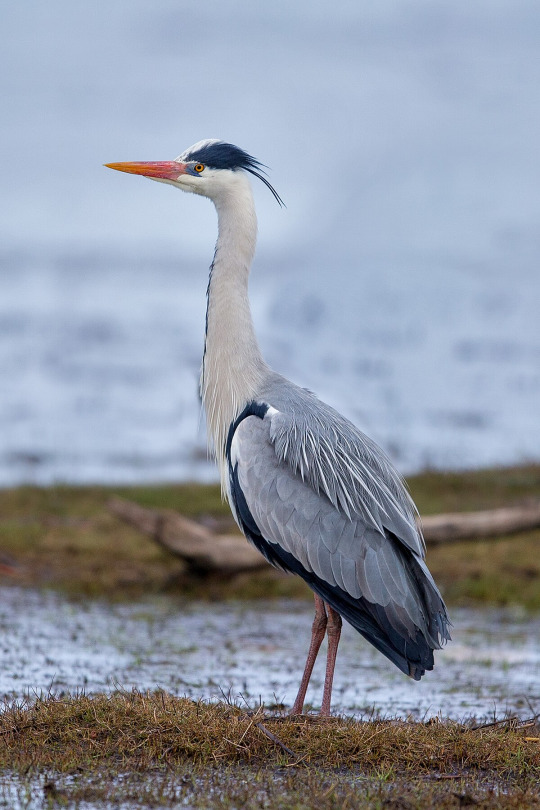
(image: a gray heron. It is a large bird with a grey and black body and wings. Its legs are long and orange. Its neck is as long as its body. The neck and head a re white and it has black above the eyes. Its beak is long, pointy, and orange. It is standing on the ground in a marsh)
Herons are associated with wetlands, a bit ironic for a firebird like Moltres. Galarian Moltres mostly just looks like the edgelord version of Moltres, but its new beak shape makes it look like a cormorant. Another aquatic bird for the fire birdy. Its ability to inflict exhaustion seems to be a pun on the phycological condition of burnout. Like G Zapdos, G Moltres doesn’t seem to be based on any particular mythological bird other than an evil phoenix or the darker aspects of the firebird.
Finishing out gen I is the Mew duo consisting of Mew and Mewtwo. Fun fact: the reason why Mewtwo comes before Mew in the Pokedex is that Mew was originally not going to be present at all, but some last-minute data cleanup freed up enough space to fit a new Pokémon in. There was not enough time to make a way to encounter it, so it became the first mythical Pokémon when special events were set up to give it out. And so a tradition was started that meant if you weren’t in the right place at the right time, it became impossible to actually catch ‘em all.
Mew is based on an embryo in reference to evolutionary developmental biology or evo devo. This is the field of study that examines development in different organisms to infer their evolutionary relationship. One method of doing this is comparing embryological development. By examining how embryos develop you can infer some things about that species’ history. For example, because human embryos develop a tail and then reabsorb it, it can be inferred that our ancestors had tails. You can also compare the embryos of two separate organisms to get an idea of when their ancestors diverged by seeing when their embryological development changes. For example, the embryos of mammals and reptiles stay similar for longer than the embryos of mammals and fish. This can tell us that mammals and reptiles diverged from each other more recently than either diverged from fish.

(image id: a scientific diagram showing the embryological development of multiple species of vertebrate at different stages. The depiscted species are a fish, a salamander, a turtle, a bird, and some kind of mammal. The diagram points out similar features in the earliest stages: gill slits, tails, and eyes. Source)
One of the earliest versions of this science came from the scientist Ernst Haeckle’s idea that ontology recapitulates phylogeny. He studied embryos and noticed that the embryos of more similar animals diverge later than those of less similar animals. He thought that an embryo would pass through all the stages of its ancestors. For example, he thought that a mammal embryo would become a fish, then become and amphibian, then become a reptile, before finally becoming a mammal. He was incorrect, but wasn’t that far off and his ideas helped pave the way for evo devo as a field. Mew allegedly being the ancestor of all Pokémon makes it the Pokémon world’s last universal common ancestor. LUCA in real life was a unicellular organism that gave rise to all current life. LUCA wasn’t necessarily the only thing alive at its time. Other organisms likely existed but their descendants died out while LUCA’s descendants survived. Mew could also be the first universal common ancestor, which would make it the first living organism from which all others diverged, both those who survived and those who went extinct. It weird that the Pokémon world’s LUCA or FUCA is apparently a mammal while plenty of its descendants are not only not mammalian, many aren’t even vertebrates, aren’t even animals, or are inanimate objects or supernatural beings. Mew looks like a jerboa with its large hind legs and long tail, though its head looks like a cat’s.
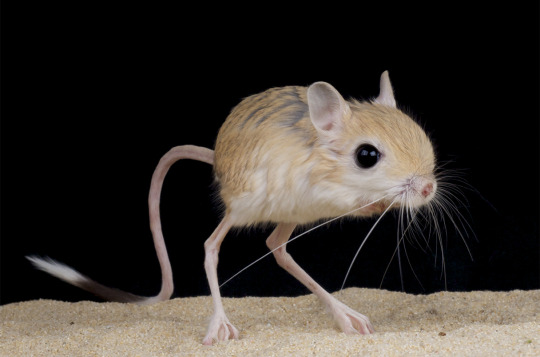
(image id: a jerboa standing on sand against a black background. It is a small mammal with a round body and a large head. Its hind legs are very long and hold it off the ground. Its forelimbs are very small and are held off the ground. Its tail is long and slender. Its fur is sandy on top and white on the underbelly)
It was confirmed in an interview that its name does not come from the English onomatopoeia for a cat sound. Mew was also designed as a simpler version of Mewtwo, an inverse of how it happened in-universe.
While the birds may be legendary Pokémon, Mewtwo is THE legendary Pokémon. Mewtwo retains many of the embryo characteristics of Mew, but it is much larger and appears more mature. This is due to its origin as a modified clone of Mew. It was modified using recombinant DNA. This occurs when methods such as CRISPR are used to insert gene sequences into a DNA strand to create new sequences that would not have occurred naturally. Because these gene sequences do not occur in nature, they can be used to produce artificially modified creatures such as goats that can produce spider silk proteins in their milk or cats that glow in the dark. DNA recombination is mostly over my head as I don’t know much about genetics, but as the technology improves, we will start seeing some potentially world-changing new technologies and organisms and will have to face some tough decisions about what the technology should and should not be used for. Mewtwo being so powerful and violent points to stories where genetic engineering is used to create monsters. Think Stories like Biohazard (AKA Resident Evil) where genetic engineering is used to make undead and mutates monstrosities or Star Trek, where genetically-engineered supermen battled for supremacy in the eugenics wars. Genetic engineering being played for horror more than it is played for good in fiction. This leans over to real life where genetically engineered crops are helping combat starvation worldwide yet are demonized as frankenfoods. Interestingly, the note you can find about Mewtwo says that Mew gave birth to it. This is closer to real-life cloning where cloned animals are born normally. In all other depictions, Mewtwo goes with the common fictional depiction of cloning where it is born as an adult in a tube. Mewtwo also drawn from stories of aliens, especially the common grey alien, which are often depicted as being psychic. This grey alien origin is more prominent in mega Mewtwo Y. Y also takes more after Mew in being more embryo-like and I think it might also draw from the starchild in 2001: a Space Odyssey. Mega Mewtwo X goes the other direction and appears to be more mature than the original, with increased musculature.
#pokemon#pokemon lore#pokemon biology#articuno#galarian articuno#zapdos#galarian zapdos#moltres#galarian moltres#mew#mewtwo#mega mewtwo y#mega mewtwo x#legendary pokemon#mythical pokemon#phoenix#firebird#evolutionary biology#white-throated magpie-jay#quetzal#hummingbird#kiwi#thunderbird#embryology#genetics#heron#jerboa#cockatrice
13 notes
·
View notes
Text


1 note
·
View note
Text


photo source
#poll#bird#white throated magpie jay#passeriformes#corvidae#calocitta#calocitta formosa#america#north america#central america
24 notes
·
View notes
Text
post this bird immediately


#daron#daron malakian#system of a down#soad#birds#bird drawing#i love turning people into birds . i will never stop#white throated magpie jay#corvidae#corvids#special interest#bird#bird art
48 notes
·
View notes
Text


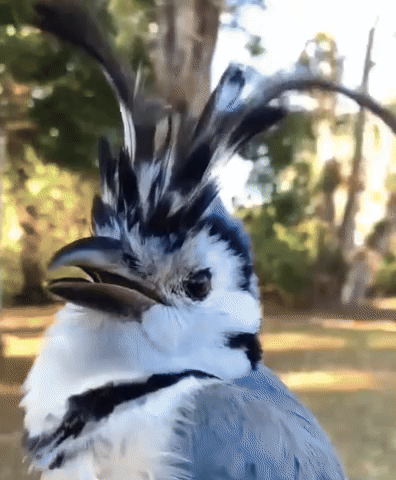
White-Throated Magpie Jay 💙🤍🖤
Please credit if you use my gifs!
#blue#white#black#bird#animal#jay#white throated magpie jay#white-throated magpie jay#feathers#nature#stim#stimmy#stimming#stimblr#sensory#stim gifs#gifset#gifs#fizzy gifs#animal stim
12 notes
·
View notes
Photo

White-throated Magpie-Jay
60 notes
·
View notes
Text
My favourite corvids
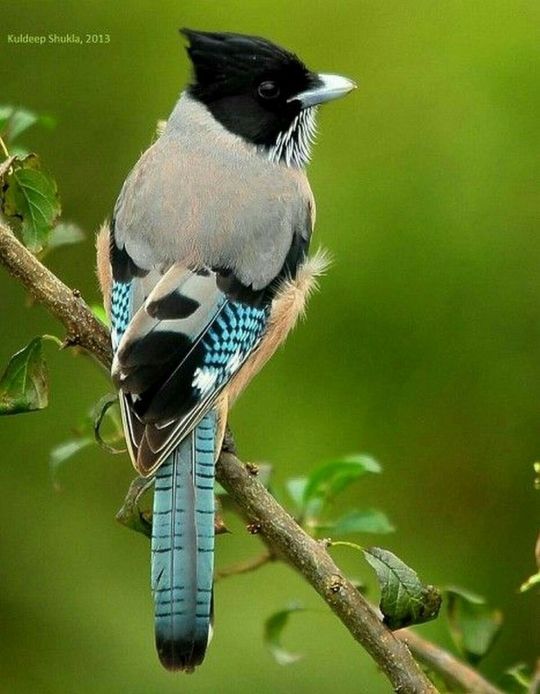









#favourites#favourite animals#birds#corvid#black headed jay#black throated magpie jay#canada jay#collared treepie#Indonesian green magpie#plush crested jay#raven#taiwan blue magpie jay#tufted jay#white winged magpie
34 notes
·
View notes
Text
thinking about the best corvid tonight (the eurasian jay)
#contact call#looove jays!! wish they were easier to see#i do enjoy hearing their velociraptor shrieks when i'm in the woods#i like all the underrated corvids#if you want to hear all my second faves: red-billed chough. rook. collared treepie. black-throated magpie-jay. thick-billed raven#+ white-necked raven my tags ran out#also really love common ravens but they're very well known#oh the HOODED CROW too can't forget them!!!
1 note
·
View note
Text
Round 2, Poll 3
White-throated Magpie-Jay vs African Penguin
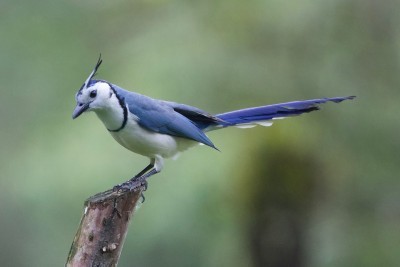

sources under cut
White-throated Magpie-Jay
While most cooperative breeders have young males stay behind to raise chicks, this species has the female offspring hang back in their home territory to help with future brrods, while the males disperse. Floating males are allowed to join in on groups while foraging, however, outside of breeding season.
Because of their social pattern, and the fact that resource guarding is not done by the males, the best way they seem to have to show off is during a predator encounter. The males will often fly directly at a low-threat predator (or even a dove) and begin making some of their many (60+) vocalizations as a way to show off, as this is the time when they're being paid attention to.
African Penguin
"They’re my favorite penguin and people forget about the warm weather species. These guys are such funny bastards. They’re like horny toddlers. They loaf. They crave violence. They can swim faster than Michael Phelps."
The nickname "Jackass Penguin" comes from their loud, braying calls- though several species of South African penguin make these same noises. Other names include: Cape penguin, South African penguin, and black-footed penguin.
African Penguin are listed as Endangered by IUCN, with the most likely cause in decline being the fishing industry. Their prey includes multiple species of schooling fish, such as anchovy, pilchard, and herring, which are also often targeted by fisherman. Human disturbance of nesting colonies also plays into this, with tourists accidentally collapsing nest-burrows, and guano or egg collection leading younger birds to abandon breeding sites.
Birds of the World: Both species
Images: Magpie-Jay (Cory Gregory); Penguin (Kalin Ocaña)
#hipster bird main bracket#polls#white throated magpie jay#african penguin#corvidae#spheniscidae#round 2#bracket: fave a
12 notes
·
View notes
Text

31/10/2023
i dont think i posted the pfp of this blog so here it is

for the tradition
#urraca copetona#white throated magpie jay#bird#bird art#cute art#my art#digital illustration#illustration#digital art#layket art
0 notes
